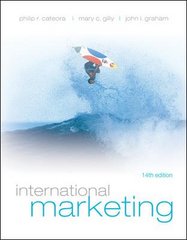Question
Part 1 : In an economy, the banks prefer to keep 25% of their deposits in reserve. The population likes to keep their currency holdings
Part 1 : In an economy, the banks prefer to keep 25% of their deposits in reserve.
The population likes to keep their currency holdings equal to 10% of the deposits.
Initially, there was zero money in the economy. Then the central bank buys $120 worth of T-bills from a household. The household receives $120 on its checking account.
Before anything else happens, which of the below is equal to $120 at the moment?
choose all that apply :
-monetary base B
-currency C
-deposits D
-reserves R
-money M
Part 2: Continuing from the previous question, the commercial bank formed reserves and gave out a loan. The population allocated the lent funds between currency in pockets and checkable accounts.
Before anything else happens, how much money is there in the economy at the end of Round 1?
Part 3: In Round 2, more lending, borrowing, and reserve formation takes place.
How much is in DEPOSITS in the economy at the end of Round 2?
Part 4: How much paper currency is in circulation after two rounds?
Part 5: Explain where each element of the monetary base is at the end of round 2.
Part 6: show with arrows the decisions of banks and the population and with boxes the stocks of money as the economy engages in two rounds of fractional reserve banking.
Step by Step Solution
There are 3 Steps involved in it
Step: 1

Get Instant Access to Expert-Tailored Solutions
See step-by-step solutions with expert insights and AI powered tools for academic success
Step: 2

Step: 3

Ace Your Homework with AI
Get the answers you need in no time with our AI-driven, step-by-step assistance
Get Started


